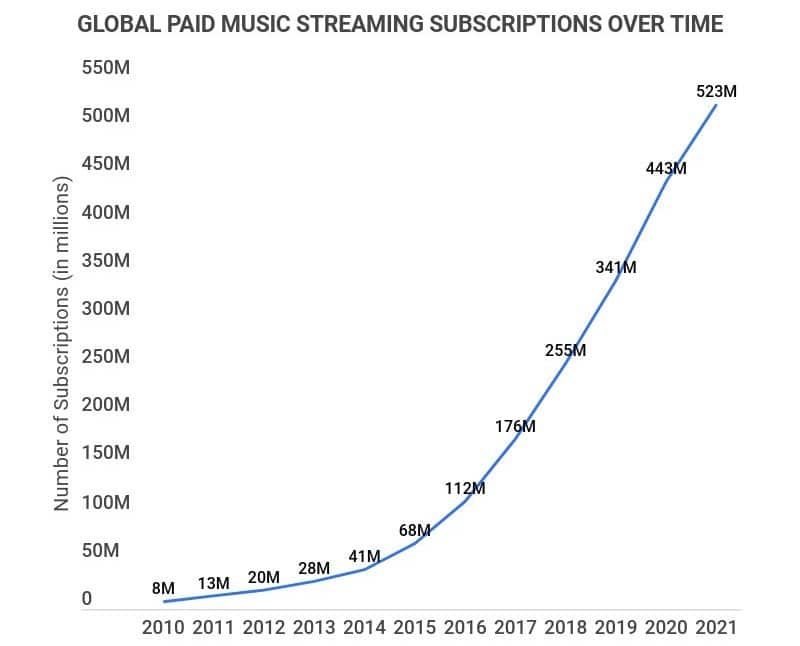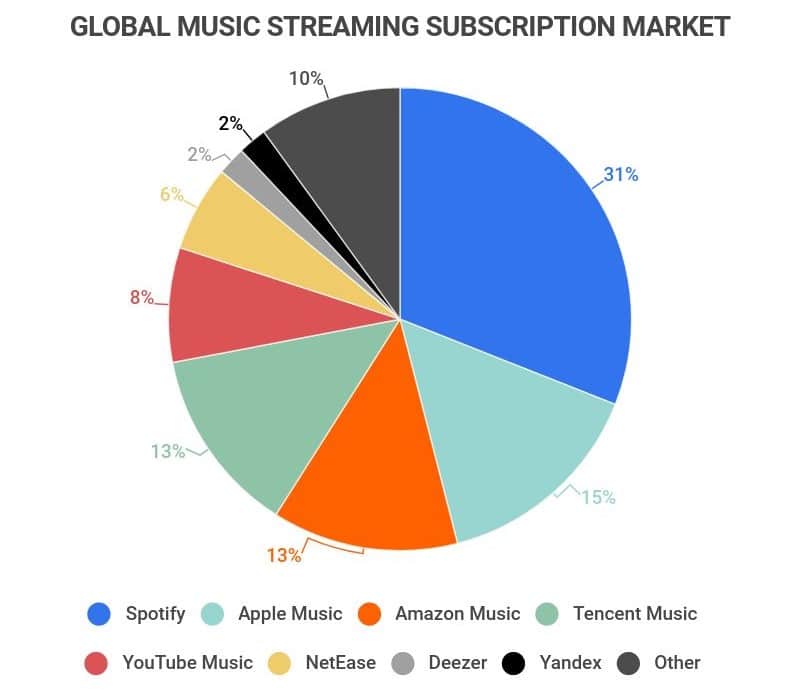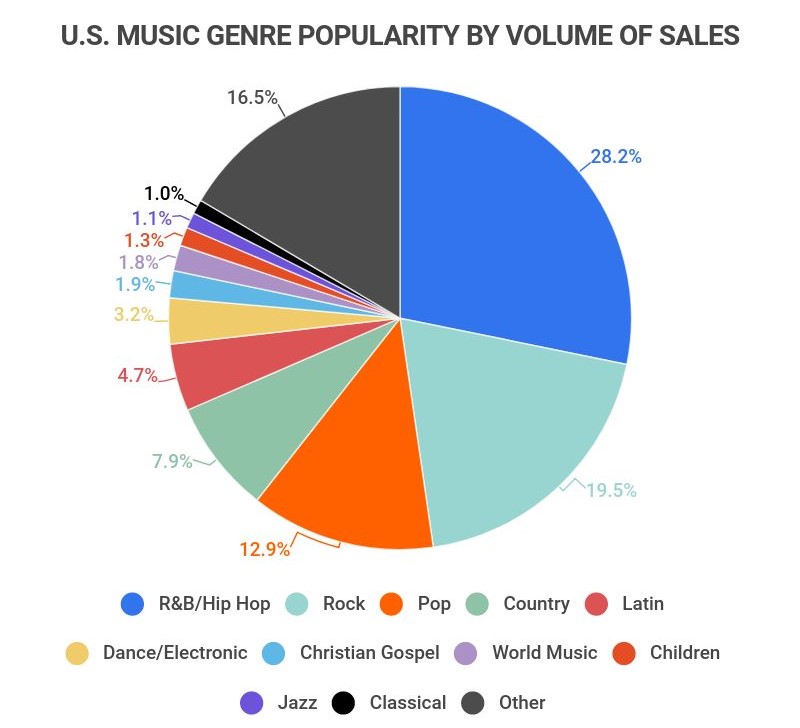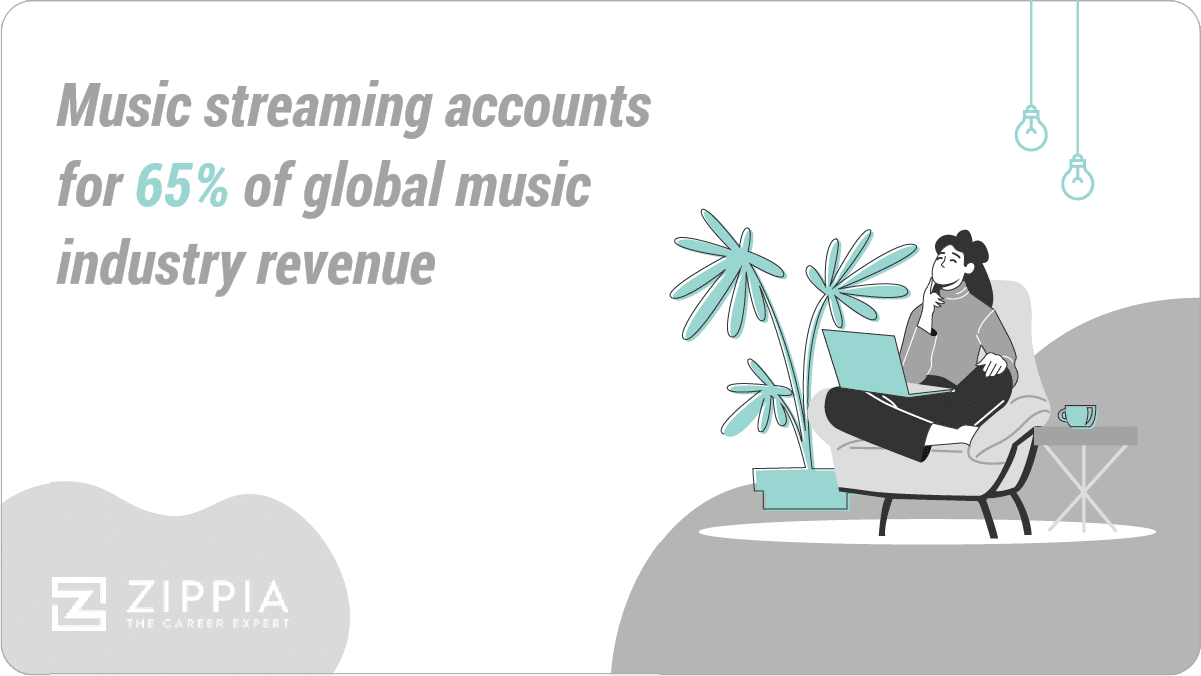- Industry Statistics
- Wedding Industry Statistics
- Yoga Industry Statistics
- Music Industry Statistics
- Landscaping Industry Statistics
- Bicycle Industry Statistics
- Coffee Industry Statistics
- Car Rental Industry Statistics
- Home Improvement Industry Statistics
- Insurance Industry Statistics
- Supplements Industry Statistics
- Golf Industry Statistics
- Fitness Industry Statistics
- US Media And Entertainment Industry Statistics
- Firearm Industry Statistics
- Financial Services Industry Statistics
- Health And Wellness Industry Statistics
- Trucking Industry Statistics
- Wine Industry Statistics
- Pet Industry Statistics
- Mobile App Industry Statistics
- Digital Marketing Industry Statistics
- Hotel Industry Statistics
- Retail Statistics
- Robotics Industry Statistics
- Jewelry Industry Statistics
- Appointment Scheduling statistics
- Restaurant Industry Statistics
- Food Delivery Statistics
- Food Truck Industry
- Fashion Industry
- Real Estate Industry
- US Film Industry
- US Beverage Industry
- USu202fFast Food Restaurants
- US Construction Industry
- US Book Industry
- Cosmetics Industry
- US Food Retail Industry
- US Pharmaceutical Industry
- US Healthcare Industry
- Oil And Gas Industry Statistics
- Airline Industry
- Nursing Shortage Statistics
- Automobile Industry
- Nursing Home Statistics
Research Summary. From vinyl to CDs and from digital downloads to digital streaming, the recorded music industry has seen some significant shifts in the last 20 years. Here are some current statistics about the music industry that will help paint a picture of where it’s been and where it’s going.
-
The U.S.’s recorded music industry earned $8 billion in revenue in 2020.
-
Music streaming accounts for 65% of the global recorded music industry’s revenue.
-
82.1 million Americans have paid streaming subscriptions.
-
From 2021 to 2026, the global music industry is expected to see a CAGR of 8.5%.
For further analysis, we broke down the data in the following ways:
Streaming | Genre | Earnings | Trends | Costs

General Music Industry Statistics
-
The annual revenue of the global recorded music industry is $25.9 billion as of 2021.
-
The U.S. is the top music market in 2021, followed by Japan, the U.K., and Germany.
-
Universal Music Group is the world’s largest record company, earning 32.1% of the global streaming and physical music industry’s revenue in 2020.
-
Independent record labels accounted for 31.4% of the world’s streaming and physical music sales revenue in 2020.
-
Sony Music Entertainment earned 20.6% of the global revenue earned from streaming and physical music sales in 2020.
-
15.9% of the revenue earned by the world’s physical and streaming music sales in 2020 went to Warner Music Group.

Music Industry Statistics by Music Streaming
-
65% of the global recorded music industry’s revenue comes from streaming.
This 2021 percentage was up from the 2020 share of 61.9%, and it includes both subscription audio and ad-supported (unpaid subscription) streams. Here is the breakdown of where the global recorded music industry’s revenue came from in 2021:
Segment Percentage of Total Industry Revenue Subscription Audio Streams 47.3% Physical 19.2% Ad-Supported Streams 17.7% Performance Rights 9.4% Downloads and Other Digital 4.3% Synchronisation 2.1% -
As of 2017, about 35% of internet users access music via copyright-infringing methods.
The most popular method of doing this was stream-ripping (illegally saving streamed music), with 30% of internet users participating in this practice. Illegally downloading music was also common, with almost 20% of internet users doing this.
16- to 24-year-olds were the most likely to participate in any type of online music piracy, with 55% of this age using illegal methods to obtain songs.
-
Spotify holds 31% of the total subscribers of the music streaming market, the largest portion of any streaming service.
Apple Music comes next with 15%, and Amazon Music and Tencent Music each hold 13%. YouTube Music holds 8% of the market’s total subscriptions, NetEase has 6%, Deezer and Yandex each have 2%, and the remaining 10% belongs to a variety of other platforms.

-
Globally, there are 523 million people who have paid music streaming subscriptions.
This was the number as of the end of 2021, and it was up by 80 million people from 2020. At the beginning of 2021, there were 82.1 million people with paid streaming subscriptions in the U.S. alone.
Music Industry Statistics by Music Genre
-
R&B and hip hop accounted for 30.7% of all on-demand audio streams in the U.S. in 2020.
This genre also held 28.2% of total album-equivalent consumption in 2020, a metric that accounts for physical sales, digital sales, and streaming.

-
Rock had 16.3% of all on-demand audio streams in the U.S. in 2020.
This means “rock” is the second most popular genre in America, thanks in large part to the album “Queen’s Greatest Hits” and Elton John’s album “Diamonds,” the two rock albums with the largest album-equivalent consumption in 2020.
-
Pop had 13.1% of all on-demand audio streams in the U.S. in 2020.
This gave pop the title of the third most popular genre in 2020. However, as far as video streams went, it beat out rock with 13.5% of plays versus rock’s 11.4%.
Music Industry Statistics by Earnings
-
Independent artists earned $1.2 billion in revenue in 2020.
This was the result of the artists direct (artists who don’t work with a recording label) seeing their total annual revenue grow by 34.1% from 2019 to 2020, and it means that artists direct held 5.1% of the recorded music market in 2020.
The revenue earned by these artists grew much faster than the 7% that the industry’s revenue grew as a whole during this time period.
-
Music publishers usually earn 50% of mechanical and residual income from a recorded song.
For live performances, music publishing companies usually only earn 25% of performers’ income.
-
Napster pays the most per stream of any streaming service at $0.019 per play.
TIDAL comes next with $0.0125 per stream, and Apple Music takes third place, paying $0.00783. Spotify, the largest streaming platform in the world, is near the bottom of the list as far as what it pays artists, giving them between $0.003 and $0.005 per stream.

Music Industry Statistics Trends and Projections
-
The global music industry’s revenue increased from $45.5 billion in 2012 to an estimated $59.48 billion in 2020.
Here is the year-by-year breakdown of the global music industry’s annual revenue:
Year Revenue 2012 $45.5 billion 2013 $45 billion 2014 $44.87 billion 2015 $46.01 billion 2016 $48.23 billion 2017 $50.88 billion 2018 $53.77 billion 2019 $56.74 billion 2020 $59.48 billion -
From 2019 to 2020, the revenue of the U.S.’s recorded music industry increased by 7.5%.
The country’s recorded music industry saw $7.4 billion in revenue in 2019 and $8 billion in 2020.
-
The global music industry’s annual revenue increased by 18.5% from 2020 to 2021.
In 2020, the industry earned $21.9 billion in revenue, and in 2021, it earned $25.9 billion.
-
The number of Americans with paid streaming subscriptions has increased from 7.9 million in 2014 to 82.1 million in 2021.
2021 had more than ten times the number of paid streaming subscribers than 2014 did.
The total number of subscribers quickly jumped from 9.1 million in 2015 to 20.3 million in 2016, and it has increased by at least 10 million every year since then.
-
Global physical music sales earned $7.6 billion in revenue in 2012 and $5 billion in 2021.
This 2021 revenue is the highest it’s been since 2017. Here is the breakdown of annual revenue earned by physical music sales around the world from 2012 to 2021:
Year Annual Revenue 2012 $7.6 billion 2013 $6.8 billion 2014 $6.0 billion 2015 $5.8 billion 2016 $5.6 billion 2017 $5.2 billion 2018 $4.7 billion 2019 $4.5 billion 2020 $4.3 billion -
The U.S. recorded music industry grew by 22.6% in 2021.
Combined, the U.S. and Canada’s recorded music industry saw a 22% increase, which was significantly higher than the two countries’ 2020 growth rate of 7.5%.
However, the Middle East and North Africa is the fastest-growing region for the recorded music industry, seeing 35% growth in 2021.
Music Industry Statistics by Costs and Production
-
Globally, record labels spent $5.8 billion on A&R and marketing in 2017.
-
Breaking an artist into a major recorded music market can cost between $500,000 and $2 million.
-
In 2020, only 2% of music producers in the U.S. were female, while 98% were male.

Music Industry Statistics FAQ
-
How much is the music industry worth?
The music industry is worth $25.9 billion. This was the global recorded music industry’s annual revenue in 2021, and the largest music market within that is the U.S.
In 2020, the U.S.’s recorded music industry earned $8 billion in revenue, which was an increase of 7.5% from its 2019 earnings of $7.4 billion. The U.S. also has 82.1 million of the world’s 523 million paid subscribers to music streaming services.
All of these subscribers play a significant part in the global music industry, as streaming accounts for 65% of the industry’s revenue. More specifically, 47.3% of the global recorded music industry’s revenue comes from subscription audio streams, and 17.7% comes from ad-supported streams. 19.2% comes from physical music sales.
-
Is the music industry growing?
Yes, the music industry is growing. Worldwide, the global music industry’s revenue increased from $56.74 billion in revenue in 2019 to $59.45 billion in 2020. During that same time frame, the U.S.’s industry grew by 7.5%, expanding its revenue from $7.4 billion in 2019 to $8 billion in 2020.
In 2021 alone, the U.S.’s recorded music industry grew by 22.6%. US and Canada together had a 22% growth rate this year, up from their 2020 rate of 7.5%.
However, the Middle East and North Africa is the fastest-growing region for the global recorded music industry in 2021, with a 35% growth rate.
In the future (between 2021 and 2026), the global music industry is expected to have a CAGR of 8.5%.
-
What companies dominate the music industry?
Universal Music Group, Sony Music Entertainment, and Warner Music Group dominate the music industry. These three companies are the world’s largest record companies, and they earned 32.1%, 20.6%, and 15.9%, respectively, of the revenue from global streaming and physical music sales in 2020.
Together, they earned 68.6% of the world’s revenue from this industry. However, independent labels and artists are starting to collectively take background, as together, they earned 31.4% of the global streaming and physical music sales revenue in 2020.
As far as the largest music streaming companies go, Spotify earns that title with a market share of 31%. Apple Music follows with 15%, and Amazon Music and Tencent Music come behind with 13% each.
-
What are the latest trends in the music industry?
The latest trends in the music industry are that streaming is supreme and that independent artists are earning more revenue than they used to. Music streaming accounts for 65% of the global recorded music industry’s revenue, which is up from the 61.9% it accounted for in 2020.
More specifically, subscription audio streams make up 47.3% of the total industry revenue, while ad-supported streams account for 17.7%. Globally, 523 million people have paid music streaming subscriptions in 2021, which is an increase of 80 million from 2020.
The other trend in the music industry is that independent artists are taking background from large record labels as far as revenue is concerned. This group of artists saw its total revenue grow by 34.1% from 2019 to 2020, which is a much larger rate than the industry’s total revenue growth rate of 7% during this same time period.
-
How much of the music industry revenue comes from streaming?
65% of the music industry’s revenue comes from streaming. This is the share as of 2021, and it’s up from the 2020s 61.9% share.
Around the world, 523 million people have paid streaming subscriptions, which account for the majority of the industry’s streaming revenue: 47.3% of the global recorded music industry’s revenue comes from subscription audio streams, while just 17.7% comes from ad-supported streams (streams from free accounts with ads).
Spotify has the largest share of the number of paid subscribers at 31%. Apple Music isn’t far behind at 15%, though, and neither is Amazon Music or Tencent Music, each of which has 13% of the subscriber market.
Conclusion
In 2021, the global recorded music industry earned $25.9 billion in revenue, and 65% of that came from streaming, both from paid and unpaid subscriptions. 523 million people around the world have paid subscriptions, 82.1 million of which are in the U.S.
Spotify has the largest portion of these subscribers, holding 31% of the market share by the number of subscribers. Apple Music comes next with 15%, but Apple Music beats Spotify as far as what it pays its artists: Apple Music pays $0.00783 per stream versus Spotify’s rates of $0.003 to $0.005 per stream.
References
-
Mordor Intelligence. “Music Market Landscape – Growth, Trends, COVID-19 Impact, and Forecasts (2022-2027).” Accessed on April 13, 2022.
-
Statista. “Streaming Drives Global Music Industry Resurgence.” Accessed on April 13, 2022.
-
IFPI. “Reports & Resources: Global Music Report.” Accessed on April 13, 2022.
-
Statista. “Music Industry Marches to Universal’s Beat.” Accessed on April 13, 2022.
-
Statista. “Music Piracy Still Prevalent in the Age of Streaming.” Accessed on April 13, 2022.
-
The Verge. “Streaming Music Report Sheds Light on Battle Between Spotify, Amazon, Apple, and Google.” Accessed on April 13, 2022.
-
Statista. “Paid Music Streaming Adds Half a Billion Users in a Decade.” Accessed on April 13, 2022.
-
Statista. “Number of Paid Music Streaming Subscribers in the United States From First Half 2014 to First Half 2021.” Accessed on April 13, 2022.
-
Music Business Worldwide. “Nearly a Third of All Streams in the U.S. Last Year Were of Hip-Hop and R&B Artists (As Rock Beat Pop to Second Most Popular Streaming Genre).” Accessed on April 13, 2022.
-
MIDiA. “Recorded Music Revenues Hit $23.1 Billion in 2020, with Artists Direct the Winners – Again.” Accessed on April 13, 2022.
-
CareersInMusic.com “Music Publishing Explained: How Artists Get Paid for Their Songs.” Accessed on April 13, 2022.
-
Digital Music News. “How Much Artists Make Per Stream on Spotify, Apple Music, Amazon, YouTube, Pandora, More (Updated for 2022).” Accessed on April 13, 2022.
-
Statista. “Music Industry Revenue Worldwide From 2012 to 2023.” Accessed on April 13, 2022.
-
Statista. “Recorded Music Industry Revenue in the United States From 2009 to 2020.” Accessed on April 13, 2022.
-
Statista. “Streaming Drives Global Music Industry Resurgence.” Accessed on April 13, 2022.
-
Billboard. “Record Labels’ Global Investment in A&R and Marketing Hit $5.8B in 2017, IFPI Report Finds.” Accessed April 13, 2022.
-
Beats, Rhymes, Lists. “How Much Do Record Labels Spend on Marketing Their Artists?” Accessed on April 13, 2022.
-
Statista. “Share of Producers in the Music Industry in the United States From 2012 to 2020, by Gender.” Accessed on April 13, 2022.
- Industry Statistics
- Wedding Industry Statistics
- Yoga Industry Statistics
- Music Industry Statistics
- Landscaping Industry Statistics
- Bicycle Industry Statistics
- Coffee Industry Statistics
- Car Rental Industry Statistics
- Home Improvement Industry Statistics
- Insurance Industry Statistics
- Supplements Industry Statistics
- Golf Industry Statistics
- Fitness Industry Statistics
- US Media And Entertainment Industry Statistics
- Firearm Industry Statistics
- Financial Services Industry Statistics
- Health And Wellness Industry Statistics
- Trucking Industry Statistics
- Wine Industry Statistics
- Pet Industry Statistics
- Mobile App Industry Statistics
- Digital Marketing Industry Statistics
- Hotel Industry Statistics
- Retail Statistics
- Robotics Industry Statistics
- Jewelry Industry Statistics
- Appointment Scheduling statistics
- Restaurant Industry Statistics
- Food Delivery Statistics
- Food Truck Industry
- Fashion Industry
- Real Estate Industry
- US Film Industry
- US Beverage Industry
- USu202fFast Food Restaurants
- US Construction Industry
- US Book Industry
- Cosmetics Industry
- US Food Retail Industry
- US Pharmaceutical Industry
- US Healthcare Industry
- Oil And Gas Industry Statistics
- Airline Industry
- Nursing Shortage Statistics
- Automobile Industry
- Nursing Home Statistics





